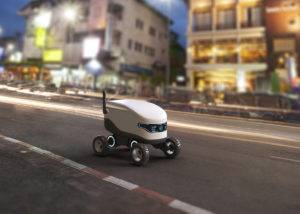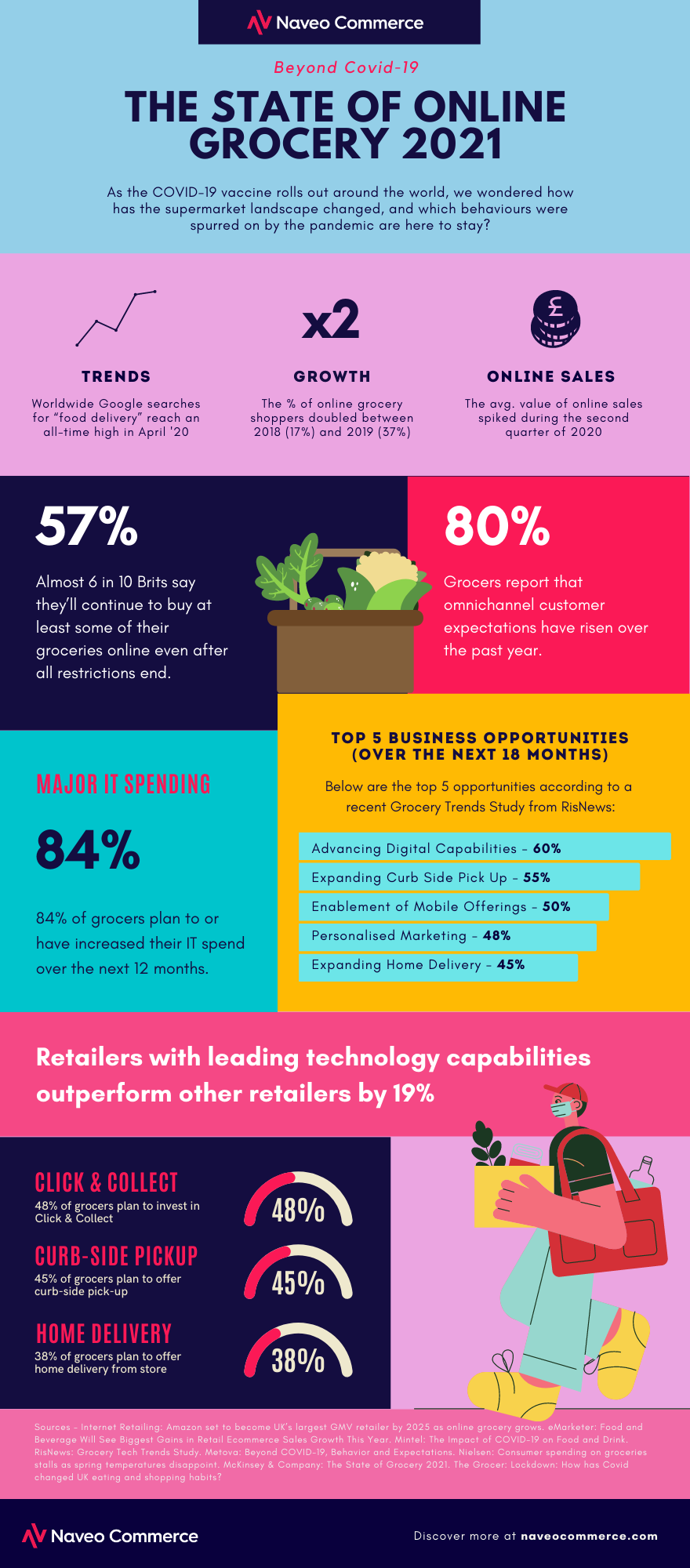For a print-quality version of “The State of Online Grocery Infographic” click here.
Consumer Habits are Changing
As consumers around the world were forced to embrace online grocery as their only option to get hold of the essentials, buying patterns inevitably changed. However, once they understood the ease and convenience of online shopping, customers were incentivised to purchase both large weekly baskets and smaller, daily shops. Now, 6 in 10 UK shoppers claim they’ll continue to buy at least some of their groceries online.
In line with this increase in demand, retailers have now started to adopt alternative options for delivery, with a particular spike in the use of click and collect in certain European markets. In fact, there has now been a rise of the ‘fusion shopper’ – in which consumers combine online, click and collect and in-store shopping in their weekly routines – and it is clear that customers are interested in convenience and a frictionless buying experience post-COVID.
The pandemic also encouraged the rise of sub one-hour deliveries. Several organisations started promising rapid delivery services to their customers’ doorsteps in less than one hour, a signifier that the former head of growth at Deliveroo was correct is his statement that “people want speed. People want things faster and faster”. Now, in 2021, start-ups have made speed their primary focus point. Dija, a London based online grocery service, promises to deliver groceries in under ten minutes, and if failing to do so customers will receive three months of free deliveries. However, it seems unlikely that an organisation centred around ‘ten-minute or less’ deliveries is economically sustainable, and it is also questionable whether such speed adds any more customer value than same-day or sub-one-hour deliveries.
What does the future hold for grocery, post-pandemic?
With vaccine roll-out progressing around the world, what will change now for online grocery? A promising trend is the increase in technology adopted by online grocers, with 84% planning to increase their IT spend over the next 12 months. However, how these organisations adopt technology will vary depending on how established and far into digital transformation initiatives they were pre-pandemic. For the majority of larger supermarket brands, it is likely they will continue to leverage technology in order to optimise processes, improve the customer experience and make their delivery systems more sustainable.
The key is for online grocers to focus on how to use innovative tech to help them grow. We will likely see an increased focus on improving customer experience specifically through big data and analytics, as grocers look to making the customer journey as seamless as possible. By providing a more personalised shopping experience, customer loyalty will inevitably increase, and this can be achieved through Artificial Intelligence (AI) and Machine Learning (ML) being integrated to predict a customers’ shopping basket from previous ordering habits, saving consumer time and energy.
Another approach could be AI and ML to better understand customer eating habits and enabling online grocers to suggest personalised meal plans or recipes, even furthering the opportunities for personalisation.
Online grocery will continue to go from strength to strength, even if there is a minor market decline now that physical stores have re-opened. However, it is important grocers recognise the two separate customer journeys they need to prioritise moving forward – speed and convenience vs. personalisation and customer loyalty. As long as innovative technologies are integrated to optimise both experiences, online grocers will be able to prioritise the customer needs and wants, which will ultimately secure enterprise success moving forward.
Talk to Us
To learn more about our end-to-end eCommerce solution for grocery retail, download our Tech Spec.
If you want to take your online grocery business to the next level then get in touch. Simply email hello@naveocommerce.com and we’ll set up a call.



